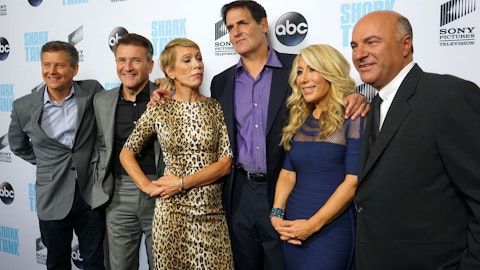John Q. Doyle: And in a world where the cost of risk is continuing to escalate our efforts to on risk consulting are really important to our clients and driving a lot of value, Mike. I also want to point out, it’s obviously been particularly on the reinsurance side of late. But after several years of pricing increases, of course, at Marsh as well. It’s a difficult market. We take our role as a market maker quite seriously. And in the quarter, announced a couple of different things that I would point out a multiline facility in London that we call fast track for our clients at Marsh. And then we also created a reciprocal inside of our MGA operations at Victor, as well trying to bring new solutions to what is a difficult market for clients. Do you have a follow-up, Mike?
Michael Ward: Thank you. Yes, that was super helpful. Maybe last quarter you spoke a little bit about developing counter cyclical products in Oliver Wyman. I’m just wondering if you can share some examples on that.
John Q. Doyle: Yes, Nick, you want to talk about some of the capabilities we’ve been building inside of Oliver Wyman?
Nick Studer: Yes, I mean, there are various of our sectors which are perhaps less exposed to the cycles. So, last year you saw we acquired the excellent Avascent business, which is aerospace and defence specialist as an example. So, some of our sectors we’ve been trying to position ourselves carefully through the cycle. And then on the capabilities side, we do a very large amount of work now in performance transformation. And that’s not solely a downturn-oriented solution but it’s needed when clients are going through either margin squeeze on the top line or the bottom line. And then a couple of years ago, we started to build a restructuring practice, it’s still very nascent, but we’ve seen very strong growth in that area as well.
So that’s just a few different examples. I think the final point I’d make is that really from the pandemic onwards, we’ve seen a reduction in the correlation between our different industries. Some have been in downturn for quite a long time, some are working through their own sort of mini crises, which sometimes requires advisory support. And then some are quite cyclical, but I’d note that our private equity private capital practice, which obviously slowed considerably over the last three or four quarters has started to pick up and we’re seeing activity there both pre and post feel. So that’s a sort of bit of a picture across the business.
John Q. Doyle: Thank you, Nick. Thank you, Mike, for the questions. Operator, next question please?
Operator: Thank you. And our next question comes from the line of Brian Meredith with UBS.
Weston Bloomer: This is Weston Bloomer on for Brian. My first question is a follow-up on Oliver Wyman, obviously strong growth there. And you highlighted a few subsectors that saw the growth. I’m curious within financial services and banking, was any of that growth driven by the banking turmoil that we saw earlier in the year or more one-off opportunities? I guess I’m going with that too. Is that something that you think could play out in the back half of this year or 2024 just given the turmoil earlier in the year?
John Q. Doyle: Thanks, Weston. And good question. Nick, maybe you could talk a little bit about — you mentioned banking being a strength to-date, but maybe you could talk about the outlook.
Nick Studer: Yes, there were different puts and takes in our growth numbers, but perhaps 35% to 40% of our growth was driven by our banking practice. As you know, that is really a preeminent business for us. And at the beginnings of that, crisis. We felt that was just adding to uncertainty may lead to some pauses in decisions which may slow down the pipeline. In the second quarter, we did see some work coming through from it. It’s hard to separate out exactly how much is driven by crisis response versus banks preparing to get ahead of capabilities that they now know they need given the very different interest rate environment. There are a lot of the core essentials of the banking system, our muscles that haven’t had to be used in the very low-rate environment we’ve had for a very, very long time.





